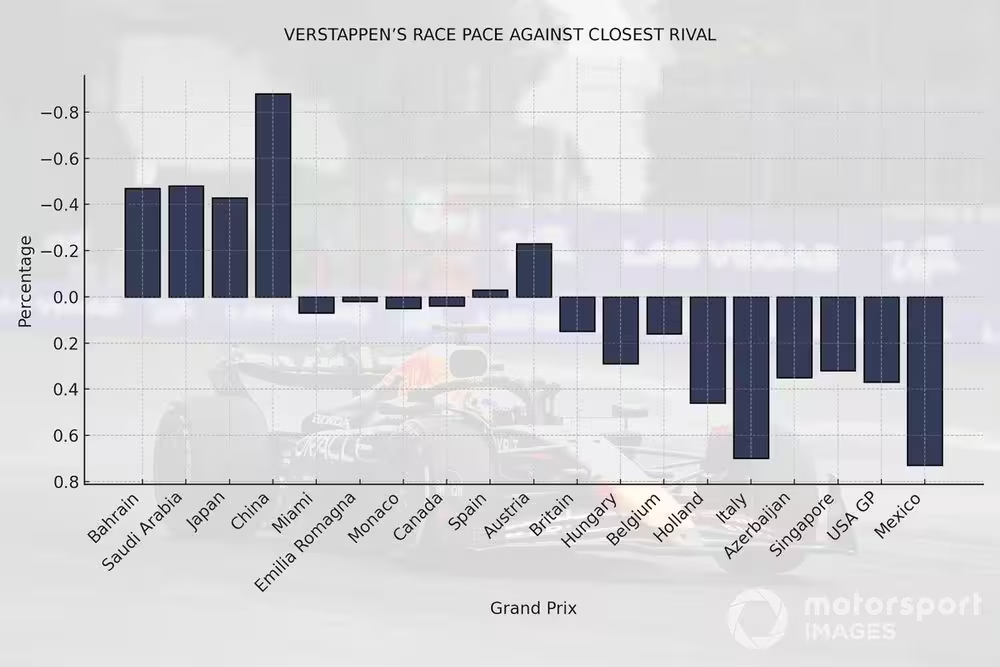Max Verstappen was not much interested in talking after Formula 1’s Mexico Grand Prix about the controversy over his double penalty because it was nowhere near his biggest worry.
In fact, it was not lost on him that, while his 20-second punishment robbed him of a chance to fight for a podium, he knew that his Red Bull was unlikely to be up there even without the sanction.
While he had managed to qualify on the front row, and even lead early on, Verstappen quickly found out that the ultimate pace was not there – especially on the medium and hard compounds.
“The problem is that we are too slow, and that’s why I’m being put in those kinds of positions,” he said of the controversial battle with Lando Norris. “That is my problem.”
That Verstappen ended up sixth, 59.558 seconds behind race winner Carlos Sainz, did owe a lot to his punishment.
But if you dig a bit deeper into the data of his performance – and pull out the influence of time lost in the pits – then the situation is not actually any better. In fact, in pure data terms, it could be argued that Mexico was Red Bull’s worst race of the season so far.
One of the best ways to properly evaluate the speed of cars is to look at their race pace, and see how it stacks up against the opposition.
Using data that has been helpfully collated by website f1pace.com, we can pull out some key information to show us how Verstappen’s pace stacks up against the opposition across the season so far.
These are based on pure racing laps run at speed, so the first lap is not counted and neither are those when drivers are either coming into the pits or leaving the pits. Laps completed under the Safety Car and Virtual Safety Car are also discounted.
Going through the season, we can show how Verstappen’s race pace stacked up compared to the fastest non-Red Bull rival.
* Engine grid penalty meant he started 11th
Based on the above information, this data can then be turned into a percentage figure to give us a baseline of Red Bull’s relative race pace over the course of the campaign – with Australia removed because Verstappen was a DNF.
As the below graph shows, Verstappen’s season has been going in the wrong direction.
The data clearly shows two-step changes over the season. From its dominant start, Red Bull fell back to going toe-to-toe with McLaren in Miami, and since the British Grand Prix, the trend seems to be of it dropping further backwards.
And while the Mexico figure of…
Click Here to Read the Full Original Article at Motorsport.com – Formula 1 – Stories…

